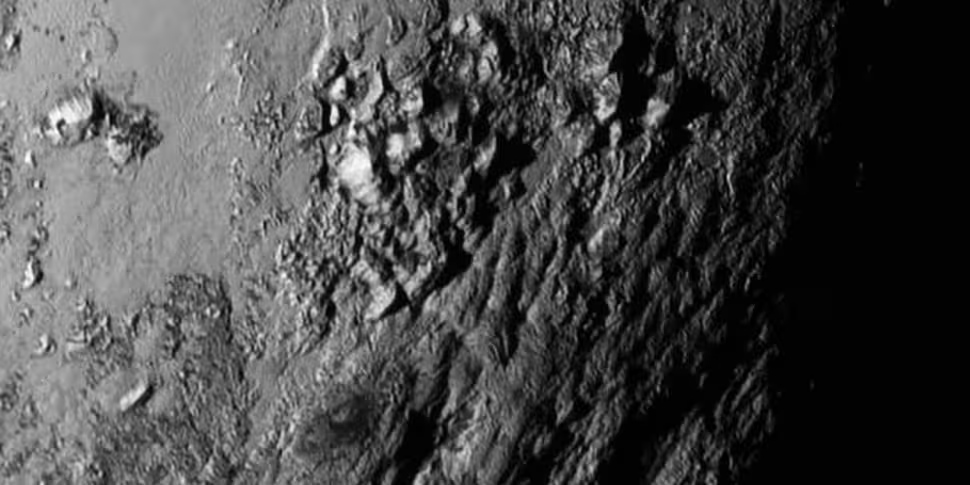NASA has released close-up images of the surface of Pluto, a day after the New Horizon's historic fly-by of the dwarf planet.
The photos reveal a mountain range, with peaks up to 11,000 feet (3,500 metres) above the surface of Pluto.
Mission scientists estimate the 'youthful' mountains formed no more than 100 million years ago, and could still even be in the process of building up. The range covers less than 1% of Pluto's surface.
Zoom into Pluto & discover mountains, seen during yesterday's @NASANewHorizons #PlutoFlyby: http://t.co/6QLXLxiW0o https://t.co/toJQ0j7wB6
— NASA (@NASA) July 15, 2015
NASA says that the dwarf planet cannot be heated by gravitational interactions with a larger planetary body, unlike icy moons located around giant planets.
GGI deputy team leader John Spencer of the Southwest Research Institute says the discovery "may cause us to rethink what powers geological activity on many other icy worlds.”
More details have also emerged about the dwarf planet's largest moon, including an area nicknamed 'Mordor':
NEW: Pluto’s largest moon Charon has youthful terrain & dark area nicknamed 'Mordor' in north: http://t.co/fNUDVAOW5h pic.twitter.com/JOWaoD1sdy
— NASA (@NASA) July 15, 2015
NASA's New Horizons spacecraft made contact after surviving the flypast of the dwarf planet Pluto.
Confirmation of the mission's success came 13 hours after the flypast itself, and more than nine years since the spacecraft began its epic journey to the outer reaches of our solar system.
NASA's associate administrator for science John Grunsfeld hailed it as a "hallmark in human history".
He added: "It's been an incredible voyage."
According to NASA, New Horizons came to within 7,700 miles of Pluto at a speed of 31,000 mph.









